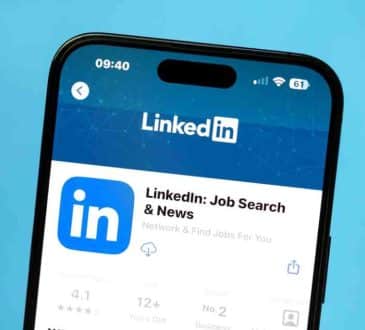New to the C-Suite? Data Will Tell You What to Prioritize

Whether the showcase hire at a new company or the newest member of an established C-suite, a newly minted executive’s first few months are often a whirlwind of addressing challenges and accomplishing proposed goals.
Much of this success relies on navigating that balance, but unfortunately, new CEOs, chief marketing officers, or other C-level leaders are rarely given the “real” company story from employees. They may get general explanations of an organization’s well-being, but most employees are reluctant to share negative issues until they know more about that new hire.
Thus, new executives must quickly learn to push for transparency and honesty and to utilize an organization’s cultural data in order to achieve real learning. By relying on data to coordinate their efforts and ensure they’re not ignoring the more fundamental obstacles, they’ll be able to effectively navigate this novel landscape and deliver those goals that they set for the company and themselves.
Listen and Learn
The two biggest challenges new leaders often face tend to be intertwined: cultural and financial problems. The larger the company and the more volatile the financial situation, the more difficult these tasks become. An extreme example of such a situation is Uber’s recent CEO turnover: When Dara Khosrowshahi was appointed the new CEO, he not only had to contend with the company’s ban from major profit hub London, but he simultaneously had to address its sexist and abusive reputation.
Because struggling companies often need new C-level executives more desperately than thriving ones, many find themselves in situations where cultural and financial issues are all too real even if a company appears to be operational from the outside. But understanding both of these problems and devising a data-driven method for addressing each starts with listening to more established employees.
During the first 100 days, new executives should talk to board members and direct reports, as well as to lower-level employees. Obviously, this process becomes more difficult as the scale of the company increases. And while it may be impossible to talk to everyone, new executives should focus their efforts on learning four company attributes: employee engagement, job satisfaction, burnout capacity, and the nature and content of employee feedback.
By initially focusing on internal connections rather than implementing new plans, new leaders can assess the workplace’s attitude toward existing practices and its willingness to change while also unveiling the root cause of financial (or potential financial) distress. While these discussions are very valuable, leveraging the available data is often overlooked and just as valuable.
Trust the Data
With the volume of data anticipated to increase tenfold globally by 2025, data is fast becoming the driving force behind every company decision, from hiring to marketing to sales metrics and talent management. But to craft the best strategies, new executives need to know what types of data their organizations collect and how that data is used.
By following these three tips, leaders can ensure that their initial decisions are as strategic and well-informed as possible and maximize the potential of their inaugural days of employment:
- Obtain a baseline understanding and build a data “advisory” team.
Engage with the chief technology officer or chief information officer on day one to educate yourself on company-specific data practices. These individuals can provide a high level of analysis on the company’s information streams.
Then consider who else understands how to read this data and who else is responsible for its collection, curation, and delivery. Seek out these individuals, and form a collaborative and trusted data team who can help you gather insights for important decisions and use these insights to instill change. Establishing this team early will provide you with a much-needed safety net in those initial months by identifying gaps in current strategies or the large-scale issues facing the organization.
- Establish and communicate expectations.
With this knowledge, you can then prioritize and communicate expectations on early easy wins — the areas where you can make biggest impact in the shortest time. But make sure you’re open with your team about your goals and proposed path to reach them. Discussing the challenges to the organization, both short-term and long-term, and soliciting feedback on your plans through companywide surveys, meetings, or discussions with other leaders can help you proactively address any blowback.
In addition, because other C-suite members can provide insight into those KPIs that are most closely linked to company performance, you can use their knowledge to guide your strategies. Remember, though, that you were tapped to lead the company because of your unique experiences and abilities, so trust your instincts and turn to the data if you need to buttress those inclinations.
- Build data intelligence into strategic examples.
Function by example, meaning that you should filter all decisions through existing data metrics while simultaneously identifying the gaps in those metrics. If a new executive “leads from the front” and other higher-up leaders like directors understand that all decisions will be made only after all details are reviewed, then they’ll understand that they also must learn to leverage data when making their cases for change. Managers and frontline employees will soon follow, creating a culture that puts data above all else to foster a more comprehensive and learned corporate experience.
While your first few months as an executive will undoubtedly come with its ups and downs, you can help stabilize that process by not creating a hostile environment that pits opinion against opinion. Understanding data, building your team to help establish expectations and effectively communicate plans, and leading by example are all strategies that build your tenure on a concrete and consistent foundation — because numbers can craft a narrative that everyone can agree on.
Add CEOWORLD magazine to your Google News feed.
Follow CEOWORLD magazine headlines on: Google News, LinkedIn, Twitter, and Facebook.
Copyright 2024 The CEOWORLD magazine. All rights reserved. This material (and any extract from it) must not be copied, redistributed or placed on any website, without CEOWORLD magazine' prior written consent. For media queries, please contact: info@ceoworld.biz









